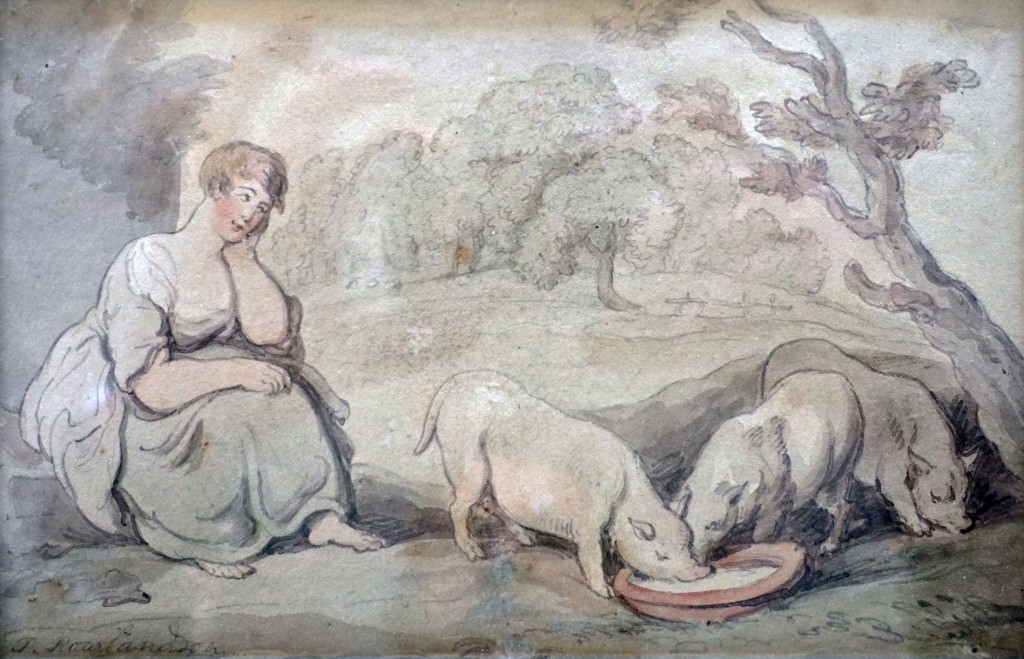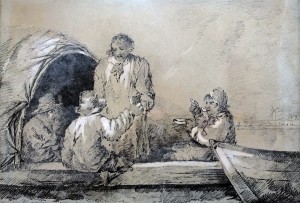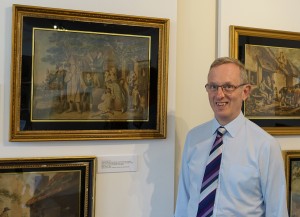
The Horsham Museum and Art Gallery’s latest exhibition ‘Portraying the Poor and Industrious in the age of Waterloo’ seeks to tell the story of the rural and urban poor, and societies changing attitude towards them in the late 18th and early 19th centuries.

The Industrial Revolution in Britain had seen a mass movement of people from the countryside to towns and cities across the country. There had been a long tradition amongst artists of depicting hawkers and the poor in urban settings. However, with increasing fears of revolution at home as well as on the Continent, artists began to draw and paint the rural poor. The timeless social order of the countryside seemed safe against the perceived threats of the urban poor. English print makers reproduced and distributed these images very successfully placing them in the nation’s consciousness.
The 1790s saw two years of appalling harvests leading to starvation. Horsham had bread riots. Events like these led to the enclosure awards which were designed to enable efficiencies in farming. For example the Duke of Norfolk enclosed Horsham in 1813. But enclosure awards did not benefit everyone. Many of the people whose lives were bound up with agricultural land were profoundly affected.
The Agricultural Depression continued after the Napoleonic Wars and the Battle of Waterloo of 1815 until 1836. Crushing taxation connected with the post-war national debt, a glut of workers returning from military service, and the subsequent collapse in food prices came with heavy social and economic costs. The depression’s severity brought financial ruin upon landlords and tenant farmers alike.

Exhibition curator, Jeremy Knight, stands next to a colour mezzotint print titled ‘The Rapacious Steward or Unfortunate Tenant’ after William Redmore Bigg (1755-1828). In this scene a tenant farmer is being taken from his family as the steward looks upon their distress dispassionately.
Jeremy Knight draws my attention to the charming sketch ‘A Fishing Trip’ by the artist George Morland (1763-1804). He comments “This sketch was almost certainly drawn on a visit to the Isle of Wight whilst the artist was avoiding his creditors in London”. Morland is well known for his rural landscapes, but he also painted coastal scenes like this one depicting fishermen and the poor. He employed a spirited technique producing a large body of work despite his own dissolute life which was often defined by drunkenness.
The artist Thomas Rowlandson (1756-1827) knew George Morland well. Jeremy enthuses “Thomas Rowlandson is probably one of the best known illustrators and caricaturists of the Regency period. When depicting the poor he often draws our attention to the activity and not the actual portrait.” I comment on the charming watercolour ‘Girl feeding Pigs’ by Rowlandson and Jeremy replies “Pigs were very important to the poor. Morland kept pigs in his house and often painted them being fed. Who knows, perhaps Rowlandson might have painted this picture in jest thinking of his friend.” Certainly Rowlandson is famous for caricaturing people’s vanities, eccentricities and hypocrisy.
These depictions provide a softened, romanticised view of the poor. A revival of the Church in England together with fears of revolution brought the plight of the poor to the public’s attention.
Jeremy Knight has once again placed our local history in the context of British art and national events in this imaginative exhibition. He is deserving of our thanks. The majority of the works on display are from private collections and are rarely seen. I am so glad that Toovey’s is supporting this fine exhibition. Admission is free and there is much to delight the visitor!
‘Portraying the Poor and Industrious in the Age of Waterloo’ runs until 28th November 2015 at the Horsham Museum & Art Gallery, 9 Causeway, Horsham, West Sussex, RH12 1HE. For more information visit www.horshammuseum.org or telephone 01403 254959.
By Revd. Rupert Toovey. Originally published on 14th October 2015 in the West Sussex Gazette.